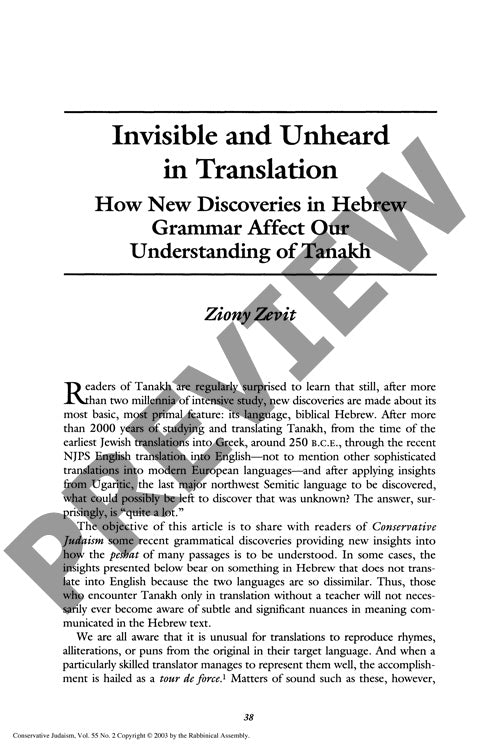Invisible and Unheard in Translation How
Couldn't load pickup availability
Biblical Hebrew encodes crucial narrative meanings through subtle grammatical features that vanish in English translations, creating significant gaps in readers' understanding of the Tanakh. Recent discoveries in Hebrew grammar reveal three previously overlooked phenomena that reshape interpretation: the particle *na'*, the lengthened imperative form, and the past-to-the-past construction. Through discourse analysis beyond the sentence level, systematic examination shows that *na'* serves as a politeness marker in contexts where speakers seek personal benefit, rather than simply providing emphasis. The lengthened imperative form signals that commanded actions benefit the speaker, clarifying numerous ambiguous passages. Most revolutionarily, the identification of a distinct past-to-the-past construction—characterized by "and + Subject + Verb" word order—demonstrates that biblical Hebrew possessed a systematic method for marking anteriority, equivalent to English past perfect tense. Over 100 examples of this construction have been documented, fundamentally altering the chronological interpretation of many biblical narratives. These grammatical features remain unrepresented in translations, necessitating informed pedagogical approaches to convey these nuances to readers dependent on translated texts. The findings contribute to biblical hermeneutics by uncovering previously unrecognized layers of meaning embedded in the Hebrew text's grammatical structure.

More Information
-
Physical Description
-
Publication Information
Published 2003
ISBN
-
Publication Credits
Ziony Zevit

